Start
Research
Publications
Statistics playground
Teaching
CV
Contact
Classification of galaxy morphologies is a very important challenge. First, an immediate benefit of classification is that it brings order to previously unorganised data. Second, a good classification scheme can help us to infer the underlying astrophysics. (For instances, consider how the periodic table of elements lead to the quantum theory of atoms, or how the Hertzsprung-Russell diagram enhanced our understanding of stellar evolution.)
There are two basic approach to classification: First, we specify the classes in which the data are sorted. This approach is called supervised classification. Second, we let the data specify its favourite classes by itself, which is called unsupervised classification or clustering. Therefore, clustering can discover what is sometimes referred to euphemistically as "natural classes".
What was the question?
Supervised classification is simple and intuitive. However, its success heavily relies on the user-defined classes to be sensible.
The basic idea was to use unsupervised classification in order to make the class definition itself objective and reproducible. The question then was, how do the natural classes favoured by the data correlate with what we already know about galaxies and their morphologies?
What did I do?
Based on shapelet decompositions of SDSS galaxies, I defined a pairwise similarity measure of galaxy morphologies that is - to first order - independent of galaxy size, brightness, orientation, and handedness.
I then performed a clustering analysis on the resulting similarity matrix using the bipartite-graph model of Yu et al. (2005). I scrutinised the performance and reliability of this method in various detailed tests.
 Figure 1. Distributions of ellipticals, face-on discs and edge-on discs resulting from the bipartite-graph model (top) and a principal component analysis (bottom). The clustering analysis clearly outperforms PCA in separating these galaxy types.
Figure 1. Distributions of ellipticals, face-on discs and edge-on discs resulting from the bipartite-graph model (top) and a principal component analysis (bottom). The clustering analysis clearly outperforms PCA in separating these galaxy types.
ResultsI found that the bipartite-graph model is stable and reliable under realistic conditions.
It discovered natural classes that could be well identified with the known morphological types of galaxies, in particular ellipticals and disc galaxies. Particularly impressive was the correct discovery of a test set of elliptical, face-on disc and edge-on disc galaxies - 28 of each type - in a 153-dimensional parameter space, as shown in Fig. 1.
Unfortunately, better classification results are currently hampered by the problems in the parametrisation of galaxy morphologies.